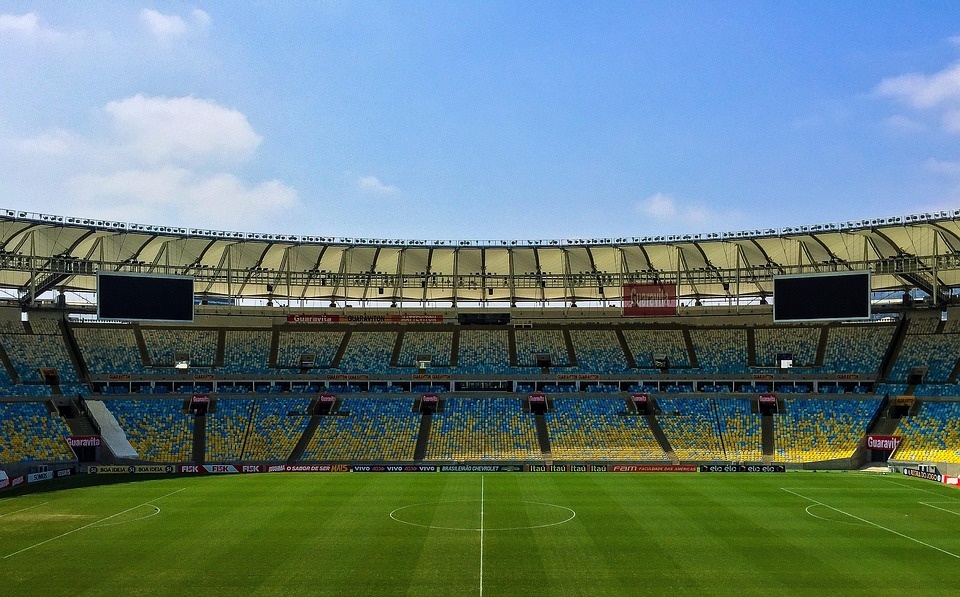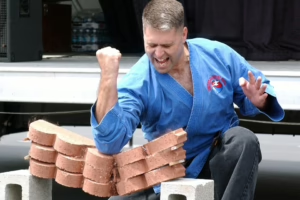Behind the Scenes: A Day in the Life of a Professional Soccer Player
Introduction
The world of professional soccer is a fascinating blend of talent, dedication, and relentless pursuit of excellence. While the cheers from thousands of fans during a match create an alluring image of success, the reality behind the scenes is often grueling, filled with strict routines, intense training, and a commitment that stretches well beyond the field. This article aims to provide an in-depth look at a day in the life of a professional soccer player, exploring their training regimens, diet, mental preparation, and the off-field responsibilities that shape their careers.
The Early Morning Routine
A professional soccer player’s day typically begins at dawn. Most players wake up around 6:30 AM to start their day early. Mornings are crucial for both physical and mental conditioning. After a quick shower, they usually begin their morning with a nutritious breakfast—often a balanced meal rich in carbohydrates, proteins, and essential fats. Common options include oatmeal, eggs, fruit, and smoothies.
Once fueled up, players might spend some time working on their recovery routines. This could involve stretching exercises, foam rolling, or even a quick yoga session to enhance flexibility and prevent injuries. Such practices are vital for the longevity of an athlete’s career, allowing them to manage the physical toll that soccer demands.
Heading to Training
After breakfast, players head to their training facilities. Depending on the club, this could be anywhere from a short drive to a more extended commute. The journey provides a moment to mentally prepare for the day ahead. Some players listen to music or a motivational podcast, while others might prefer silence to focus their thoughts.
Training Sessions
Upon arrival, players engage in a variety of training activities designed to sharpen their skills and enhance their physical conditioning. Training sessions generally begin with warm-up exercises that might include light jogging, dynamic stretches, and ball work. This phase is critical for reducing the risk of injury and preparing both the body and mind for the rigorous activities to come.
Technical Drills
Once warmed up, players move into technical drills. These exercises may focus on improving passing accuracy, dribbling under pressure, or shooting techniques. Coaches use a mix of individual drills and team exercises to build both personal skill sets and overall team chemistry. The intensity of these sessions mimics real-game scenarios, ensuring that players are well-prepared for matches.
Tactical Sessions
After technical drills, the focus often shifts to tactical sessions. Coaches use this time to implement strategies for upcoming games. Players review their roles within formations, defensive setups, and offensive plays. Understanding and executing these tactics is crucial, and players are expected to ask questions and analyze footage to ensure complete comprehension.
Physical Conditioning
Physical conditioning forms another integral part of a player’s training regimen. This could involve sprinting drills, agility exercises, or even circuit training. These workouts are designed to build stamina, speed, and overall fitness, ensuring that players can perform at peak levels throughout a match. Conditioning sessions often conclude with a cool-down phase, involving light jogging or stretching.
Nutrition and Hydration
Nutrition is a cornerstone of an athlete’s performance. After a rigorous morning of training, players typically refuel with a post-training meal or snack. Foods high in protein and complex carbohydrates are favored to replenish glycogen stores and aid muscle recovery. Chicken, fish, quinoa, and vegetables are common choices.
Hydration is equally important. Players are constantly reminded to drink water throughout the day, especially after intense workouts. Many clubs employ nutritionists to help tailor meal plans specific to each player’s needs, factoring in their position, training intensity, and personal preferences.
Mental Preparation
Professional soccer players spend as much time training their minds as they do their bodies. Mental preparation includes visualization techniques, mindfulness practices, and goal-setting exercises. Players often work with sports psychologists to develop strategies for enhancing focus, handling pressure, and cultivating a winning mindset.
Visualization techniques involve mentally rehearsing plays, anticipating game scenarios, and envisioning success. By picturing themselves in high-pressure situations, players can build confidence and reduce anxiety on match day. This mental aspect of training is often overlooked but plays a significant role in performance.
Afternoon and Evening Activities
After training, professional soccer players often have the rest of their afternoon free, providing time for personal activities. Some may choose to participate in recovery practices such as ice baths, massages, or low-intensity exercise like swimming. Others might take this time to focus on skill development through private sessions or individual workouts.
Personal Time and Social Life
Balancing professional commitments with personal life is essential for soccer players. Many find joy in spending time with family, pursuing hobbies, or engaging in social activities. However, the nature of their profession often necessitates sacrifices, particularly during the season.
Some players use social media to engage with fans, sharing glimpses of their daily lives, workouts, and personal experiences. While this connection can be rewarding, it also places athletes under public scrutiny, making the management of time and privacy crucial.
Evening Routine and Preparation for Match Days
As evening approaches, players gear up for their next challenges. A typical evening might include a team dinner, where coaches and players review the day’s training, discuss strategies for upcoming matches, and bond through shared meals. This time helps strengthen team cohesion and fosters a unified approach to the game.
Pre-Match Routine
Before a match, professional players often follow a meticulous pre-game routine. This includes physical warm-ups, reviewing tactics, and gathering team morale through motivational speeches or rituals. Visualization techniques are also employed during this time, allowing players to mentally rehearse their performances.
As kick-off approaches, players often find solitude for brief moments, reflecting on their goals and visualizing success as a means of centering their thoughts.
The Game Day Experience
Game days are a unique blend of anticipation, excitement, and pressure. Players typically arrive at the stadium several hours before kickoff, allowing ample time for warm-ups, team strategy discussions, and pre-game rituals. Upon arrival, players engage in a series of physical and mental preparations to ensure they are in peak condition.
The Importance of Support Staff
Behind every successful player is a dedicated support staff. Coaches, trainers, physiotherapists, nutritionists, and performance analysts all contribute to a player’s readiness. Their enveloping presence ensures that players receive the best care and support, allowing them to focus solely on their performance during matches.
Players often rely on these professionals for last-minute adjustments, injury prevention strategies, and post-match recovery protocols.
The Match Itself
As the whistle blows, all the training, preparation, and rituals culminate in the match. Players thrive on adrenaline, channeling their skills and strategies to achieve victory. The intensity of the competition, the atmosphere created by fans, and the stakes of the game all play a role in the experience.
Post-Match Recovery and Reflection
After the final whistle, a player’s job is far from over. Post-match recovery intensifies the importance of looking after one’s body. Players often engage in cool-down exercises, stretching routines, and hydration protocols to facilitate recovery.
Reflecting on their performance is a crucial aspect of growth. Many players watch recorded footage of the match to evaluate their contributions, seeking areas for improvement. This post-match analysis often guides their preparation for future games.
Off-Field Responsibilities
When the whistle signals the end of the match, players are not just athletes; they are also role models, spokespeople, and ambassadors for their clubs and communities. This multifaceted responsibility includes participation in promotional events, youth training clinics, and charity engagements.
Media Duties
Players must manage media responsibilities that accompany their profession. Interviews, press conferences, and social media engagement require careful attention, ensuring that they represent themselves and their club positively. This visibility plays a significant role in shaping a player’s public persona, impacting both their career and legacy.
Fitness Maintenance and Off-Season
Off-seasons provide players with a much-needed break, but maintaining fitness remains paramount. Many players undertake individualized training programs to retain conditioning while recovering from the demands of the season. Contracts may also include clauses requiring players to uphold specific fitness levels year-round.
Preparing for Future Seasons
As the off-season approaches, players work on setting goals for the next year. These may involve improving technical skills, enhancing physical conditioning, or addressing tactical shortcomings. Personal reflection supports their evolution as athletes and ensures readiness for the next competitive season.
Conclusion
A day in the life of a professional soccer player is anything but ordinary. From their early morning routines through relentless training sessions to the pressures of match days and the responsibilities that follow, these athletes navigate a world filled with challenges and expectations.
Behind the scenes, the commitments to physical fitness, mental preparation, and community engagement define their careers. As fans celebrate the moments of glory on the pitch, it is essential to understand the dedication, sacrifice, and hard work that shape a professional soccer player’s journey. The life may be glamorous in the spotlight, but the dedication required to succeed is both profound and admirable.
Footnotes
- "How Soccer Players Train: A Look at the Modern Training Techniques" – Sports Science Journal.
- "The Importance of Nutrition for Soccer Players" – International Journal of Sports Nutrition.
- "Mental Preparation Techniques for Athletes" – Journal of Sports Psychology.
- "The Role of Support Staff in Professional Sports" – Athletic Management Review.
- "Analyzing Player Performance: The Importance of Post-Match Reflection" – Journal of Sports Analytics.
This article presents a comprehensive view of a professional soccer player’s life, emphasizing the hard work and dedication required behind the scenes. Please let me know if you would like to expand on any specific section!


























Add Comment